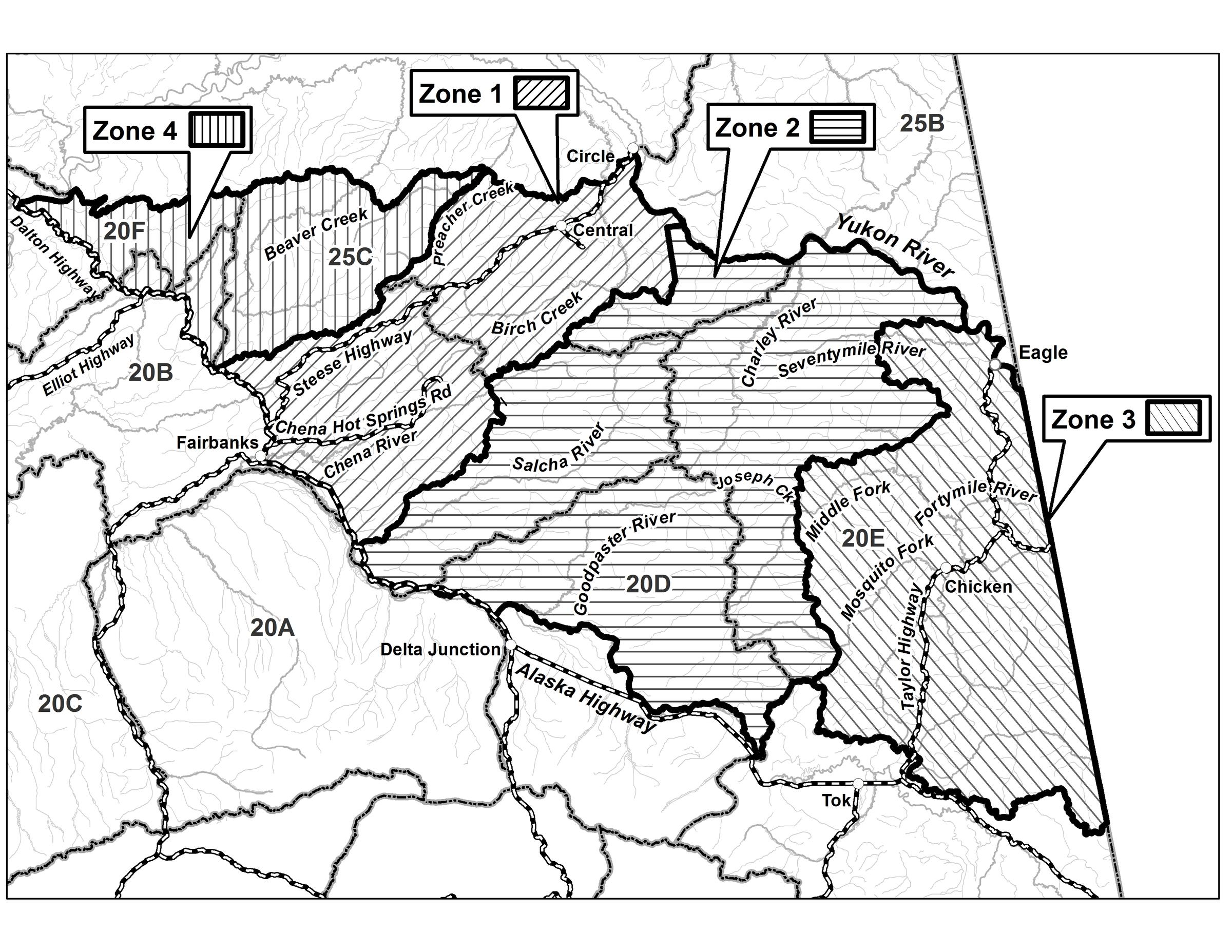
Growth of the Forty Mile caribou herd in the Eastern Interior has prompted the state to open the winter hunting season Friday, two weeks earlier than normal.
The Forty Mile caribou hunt will run for four days along the Steese Highway, and continue beyond Monday in three other zones, including along the Taylor Highway. Fish and Game interior management coordinator Doreen Parker McNeill said the changes reflect weak fall harvest in the Taylor Highway area, and a new population estimate, which shows the Forty Mile herd has increased from 50,000 caribou to over 71,000 animals.
”The Forty Mile harvest management plan calls for increasing the rate at which we harvest once the herd reaches 70,000,” Parker McNeill said. “So we now know we’re above that number.”
Parker McNeill says the overall Forty Mile herd winter harvest quota has been upped to a thousand caribou. Harvest hinges as much on herd size as its proximity to road accessible areas. Parker McNeill says that there are caribou in the Steese Highway hunt area.
“We don’t know if there’s going to be lots of caribou there,” Parker McNeill said. “We do expect that there will be lots of hunters there. Any time we announce a short opening, it’s like a magnet and it draws lots of hunters.”
The Forty Mile caribou herd has been historically much larger than the current population estimate, but Parker McNeill says a habitat degradation driven die off is a possibility.
”It’s not a concern that, ‘Oh my God, at this level they’re gonna crash.’ It’s a concern in that, what we need to do is watch very carefully,” Parker McNeill said.
The Forty Mile herd is the target of the state’s largest wolf control effort. Parker McNeill says the wolf kill will continue through this spring, when the management plan calls for pausing it, to give biologists a chance to see how wolves, caribou and their habitat respond without wolf control.
Dan Bross is a reporter at KUAC in Fairbanks.




